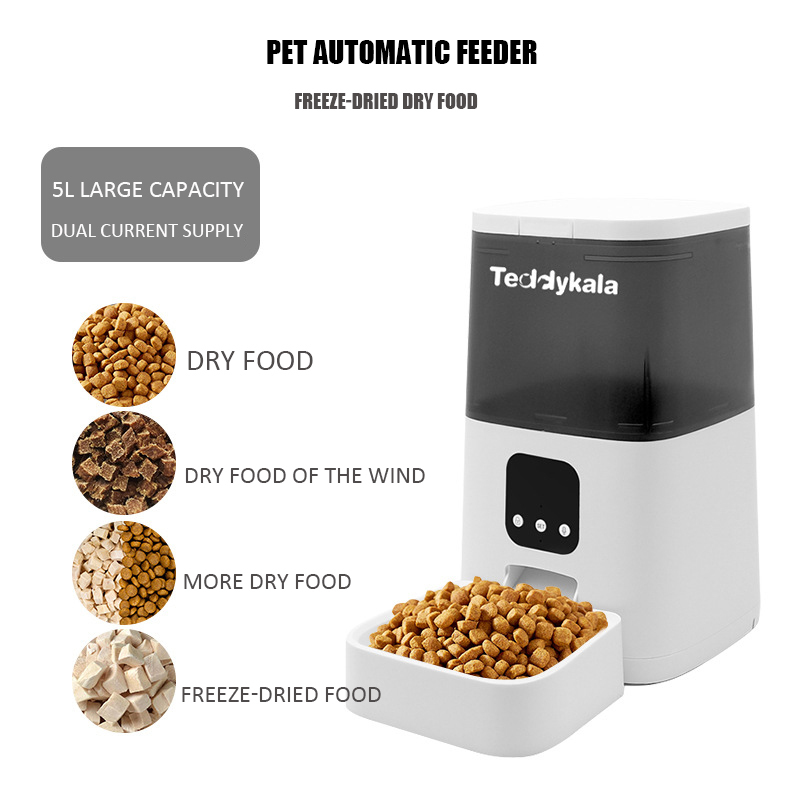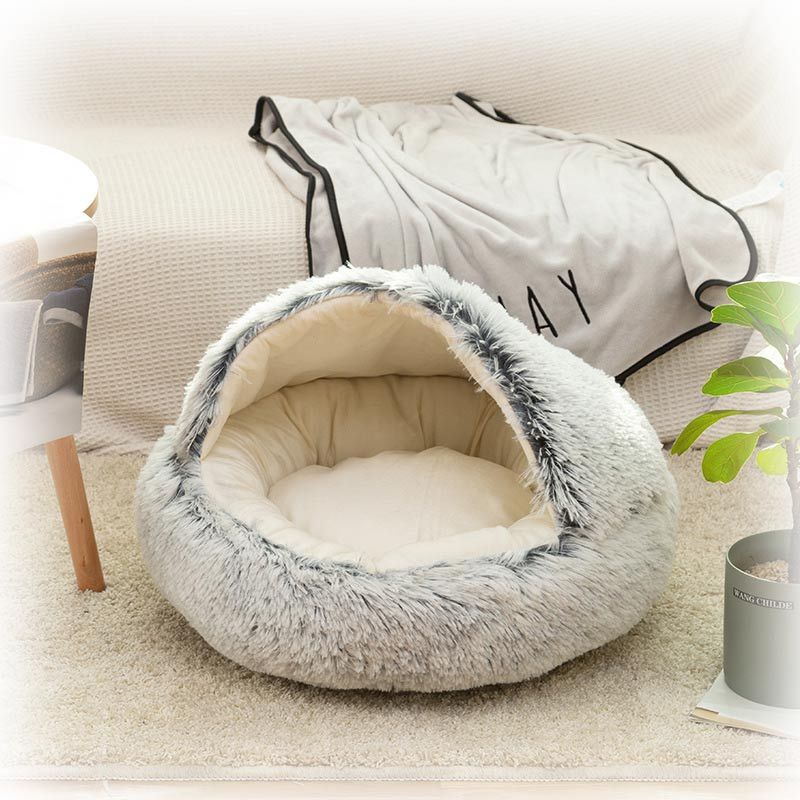TEDDYKALA's blog
"For years, we have used FARC whenever our new dog has separation anxiety or stress," says Peralta. "It's really incredible how the dog responds."
Since Bill is a particularly anxious boy who doesn't like to explore or be alone, the FARC has been a perfect way to keep him calm and happy when rescuers can't hold him themselves.
"Obviously, we'd love to be able to hold Bill all day, but there's always a lot to do around here," Peralta said." As long as he's comfortable and happy - that's all that matters."
After spending a few weeks in the caring arms of FARC, Bill was finally adopted into his new family. Now he gets all the love he deserves and someone to spend plenty of time with.
Summer vacations are much more fun with the whole family around - including your pup. But whether you're heading to the beach, the trails, or the highway this summer, you want to make sure your dog is able to enjoy his vacation safely. (Peace of mind also leads to less stress for dog parents!) So, we've outlined 15 key tips to remember when you're out and about this summer - so you and your pup can make automatic dog feeder together.
On the trails
Check for ticks - Ticks are common in wooded areas, so be sure to run your fingers through your dog's coat to feel for any bumps on the skin. If you find one, use tweezers or a special tick removal tool to get rid of it.
Keep an eye out for poisonous plants - Many common plants are toxic to dogs if ingested, so it's important to keep your dog from biting into any plants while hiking. Make sure you stay on the trail and keep them on a leash so you can redirect them as needed. Training cues, such as "leave it alone," are also important to teach your dog.
Give your pup plenty of rest - Your dog may be so excited about their adventure with you that they may not know how to express their need for a break. Especially on long hikes, you'll want to give them plenty of breaks to catch their breath and drink water. Watch for signs of overexertion, too: excessive panting and limping are obvious signs, as is your dog lying down on a hike.
At the beach
Know the signs of overheating - in warm, sunny weather, dogs can get as hot (if not hotter!) than people - Especially if your dog is a long-haired breed. Panicked panting, shortness of breath, or a bright red mouth are all emergency signs of overheating, which means you should take your dog to the vet. To make sure they stay cool, keep ice packs and a spray bottle handy, as well as an umbrella for shade.
Give them a life jacket - Even if you're not sure if your dog will venture into the water, a life jacket is important whenever they're near the water. Not all dogs know how to swim instinctively!
Protect their paws on hot sand - sand can heat up to dangerous temperatures - sometimes as hot as the sidewalk! Try to go to the beach during the cooler parts of the day (morning and evening) or invest in protective footwear. (Once you're in the shade, you should have robot cat litter box.
On the road
Make sure they are safe while driving - The best option for keeping your dog safe is to secure them in a crate or carrier while in the car. If your car is not large enough for a crate, then look for a carrier that is approved by the Center for Pet Safety.
Keep the car well ventilated - Your back seat is probably much warmer than if you were in the driver's seat, even while driving. Make sure their vents are open and the air is circulating so your dog doesn't get too hot.
If you’ve been planning to help your funny dogs bring new puppies into the world, her pregnancy can be an exciting time! Before and during your pooch’s pregnancy, you should educate yourself on how to care for her. It’s important to ensure that she gets the proper nutrition and vet care and that she feels safe and happy for a healthy pregnancy. Here’s how to care for a pregnant dog:

What to Expect When Your Dog is Expecting
Dogs are normally pregnant for about 63 days. Similar to humans, pregnancy in dogs is divided into three trimesters of equal length. For the first few weeks, your dog will show few signs that she’s pregnant. She may gain a little weight, but other than that she will show no changes. During the third or fourth week, changes in her hormones may cause a little morning sickness. If she seems tired and avoids food, then offer her small meals throughout the day. Eat less high-fat food, too much fat will make the uterine wall too smooth, leading to a higher probability of failure to fertilize the egg. Drink clean water, do not give too cold water, keep it at room temperature, try to ensure that it is changed once a day, do not drink water on an empty stomach, do not drink water immediately after strenuous exercise, and pay special attention to prevent binge drinking. Because binge drinking is likely to cause intestinal cramps, uterine contractions, resulting in the rupture of the fetal membrane vessels and miscarriage.
Being Gentle
Between the 28th and 35th days of pregnancy, it’s possible to feel walnut-sized puppies inside your dog. However, you shouldn’t try this yourself – only someone trained in vet care can do it safely.
When your dog is pregnant, you should be very careful about how you handle her. Her puppies are fragile and could be harmed if her belly is touched too roughly.
Exercise
Exercise is important! It helps to preserve your dog’s well-being and keeps her in good shape during pregnancy. You should make sure she gets regular – but not strenuous – exercise. Medium-sized dogs are the dogs that are bred in larger numbers. Medium-sized dogs are judged by the amount of activity the dog gets when choosing dog food. If the dog is more active, the nutritional needs are greater. Energy and protein are the nutrients they need.
Nutrition
Be careful if you choose to give your dog supplements. Getting too high a dose of certain nutrients can harm the puppies. In fact, a supplement may not even be necessary if you’re feeding her a high-quality dog food that’s fortified with all the essential vitamins and minerals.
If you’re unsure of how to best meet your dog’s nutritional needs, it’s a good idea to talk with your vet. The American Kennel Club recommends that as your dog gains weight in the final five weeks, you should gradually increase the amount that you feed her. Work up to giving her 35-50% more than usual. She should be fed in small meals throughout the day as larger meals might make her feel uncomfortable. Here we recommend you teddykala’s cat beds, which can help you solve related problems.
If you’re a newbie with delivering puppies at home, have an extensive conversation with your vet. Talk about what you need to do during the delivery and how to care for newborn puppies. Make sure you are prepared with all the supplies you will need. If you know any experienced breeders, this is a good time to call in a favor – ask if they’ll be present during the birth.
If your dog tends to be anxious, they will look to you for protection. Here are a few ways to help your funny dogs become less anxious:
Know What Scares Them
By knowing what triggers your pooch’s anxiety, you can help your dog become less anxious. If they get separation anxiety, help them by creating a comforting spot in the home that has your smell, plenty of food and water, and maybe even their favorite show (that’s right, dogs love TV, too). This way, they know they are taken care of even when you’re not around.

If you want to take it a step further, you can even get a treat dispensing camera. This means you can watch over your pup, send them a treat for being good, and even talk to them through the device. These devices are often controlled from an app on your phone and can mean the difference between a calm dog and a ruined pair of shoes.
Create a safe and comfortable den for your dog in a secluded corner of your home. Here we recommend you teddykala’s cat beds, which can help you solve related problems. It is best to have a closed cage similar to an air box, rather than a four-sided metal mesh cage. A closed cage can enhance the dog's sense of security. Put some old clothes with the owner's smell in the kennel, and the owner's smell will also make the dog feel at ease. Then conduct kennel desensitization training for the dog (the kennel desensitization training method will be explained in a separate article), and reward the dog with treats and toys to make the dog accustomed to resting alone in the kennel.
If you want to help your dog even more during mealtime, add a half-cup or a cup of cold chamomile tea to their water. Unless they are particular or will notice the difference, your pup will slurp the calming tea down and hopefully relax and unwind. If they are finicky when it comes to chamomile, you can also try flower essences. They have less of a taste and can be prepared in a more subversive way.
Avoid Punishment
When the pup begins to chew, scratch, bark, etc. because of their anxiety, try to avoid scolding them as it makes them more anxious and possibly more destructive. Instead of scolding, take them out of the stressful situation and reintroduce them to it in a structured manner. This will normalize your dog to the stressful situation and will show them that it is not always permanent. If they have done well by not chewing, scratching, biting, or barking, offer them a treat as a reward and distraction.
Separation and desensitization training for dogs. Let the dog stay in the den and leave a feeder ball for the dog to play with. Then pretend to go out, close the door, stay outside for a few minutes, and then come back home. If the dog is quietly in the crate, praise him and reward him with some treats. Repeat this training over and over again, and gradually increase the time outside the house, eventually allowing the dog to spend an hour or two in the crate quietly.
